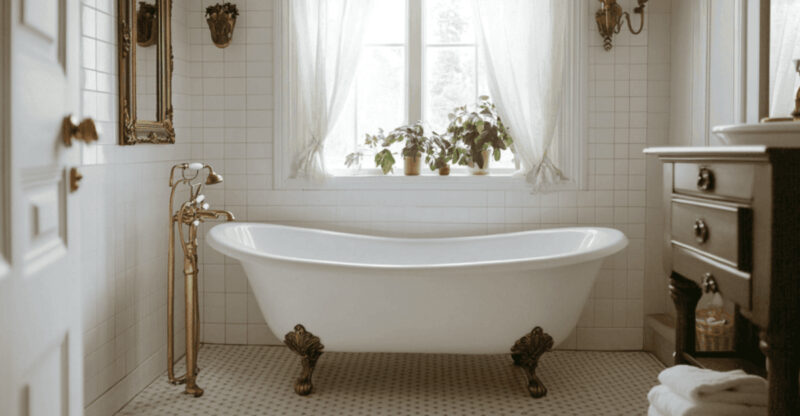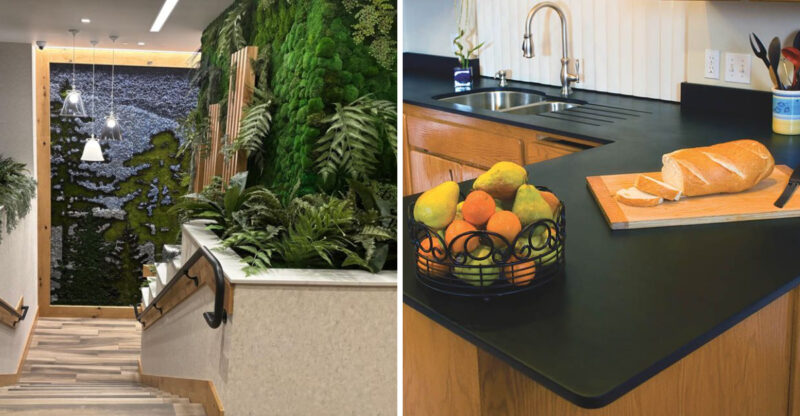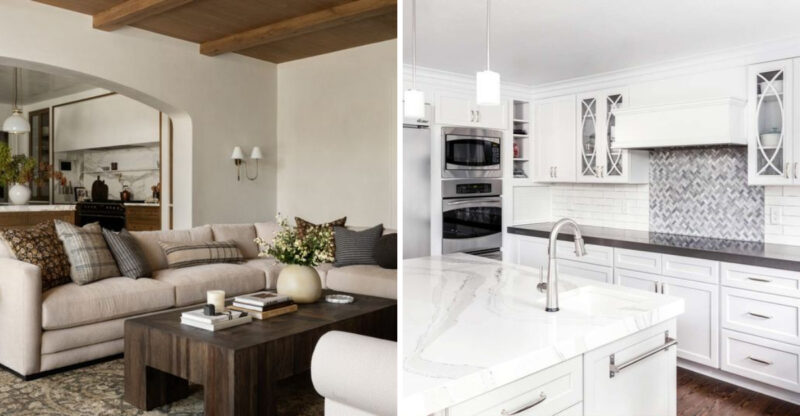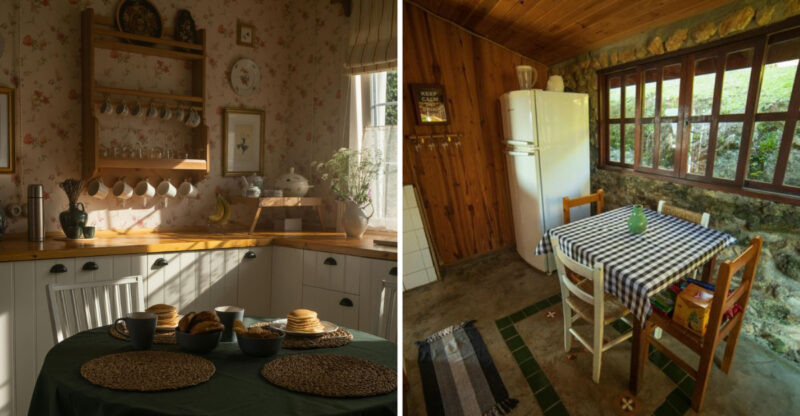10 Small Kitchen Setbacks You May Face And The Fixes Designers Recommend

Small kitchens can be charming, but they often come with frustrating challenges that make cooking and entertaining difficult.
From cramped countertops to awkward layouts, these common issues can turn your culinary space into a daily headache.
I’ve gathered insights from top designers who know exactly how to transform these kitchen nightmares into functional, beautiful spaces you’ll love spending time in. Keep in mind, solutions may work differently depending on your kitchen’s shape, size, and your personal cooking habits.
1. Limited Counter Space
Running out of prep space is the number one complaint I hear from small kitchen owners. When you can barely fit a cutting board next to your coffee maker, cooking becomes a juggling act.
Smart designers recommend installing a pull-out cutting board that tucks away when not in use. Another genius solution? Look up! Wall-mounted knife strips, magnetic spice containers, and hanging pot racks free up precious counter real estate.
If you’re ready for a bigger change, consider replacing that rarely-used corner with a flip-up counter extension that folds down when you don’t need it. Even small additions like over-the-sink cutting boards can make a world of difference during meal prep.
2. Cramped Storage
Where do all these kitchen gadgets come from? One day your cabinets close easily, the next they’re bursting at the hinges. Insufficient storage makes even simple cooking tasks frustrating.
Professional organizers swear by cabinet door organizers that utilize that wasted space inside cabinet doors. Think narrow racks for spices, cleaning supplies, or pot lids. Those awkward corner cabinets? Transform them with lazy susan turntables or specialized corner pullouts.
Did you know ceiling height cabinets can increase your storage capacity by up to 30%? Store seasonal or rarely-used items up top. For lower cabinets, drawer organizers and stackable containers maximize every square inch while keeping everything visible and accessible.
3. Poor Lighting
Shadows looming over your cutting board aren’t just annoying they’re dangerous. Many small kitchens suffer from inadequate lighting that makes food prep harder and cooking less enjoyable.
Layered lighting is the designer’s secret weapon. Start with good overhead lighting, then add under-cabinet LED strips to illuminate countertops directly. These thin, energy-efficient lights install easily and eliminate shadows completely.
For an instant upgrade, swap your fixture’s existing bulbs for brighter, whiter options that render food colors accurately. If your kitchen has a window, keep treatments minimal to maximize natural light. Pendant lights over islands or eating areas not only brighten your space but add style points without taking up valuable square footage.
4. Awkward Layout
Sometimes the problem isn’t size it’s design. That refrigerator door that can’t fully open or the dishwasher that blocks half the kitchen when loading dishes can drive anyone crazy.
Kitchen designers focus on the work triangle the path between your sink, stove, and refrigerator. If yours is inefficient, consider slim-profile appliances specifically designed for small spaces. European and apartment-sized models can shave inches off standard dimensions while maintaining functionality.
Swinging doors eating up precious space? Replace them with pocket doors that slide into the wall. For truly problematic layouts, a rolling kitchen cart creates a movable work surface that adapts to your needs, then tucks away when finished. This flexibility often solves even the most challenging layout issues.
5. Outdated Appliances
That avocado-green refrigerator might have retro charm, but it’s probably hogging space and energy. Older appliances were rarely designed with small kitchens in mind, creating inefficient footprints and wasted space.
Modern compact appliances are game-changers for small kitchens. Two-drawer dishwashers let you run small loads efficiently. Combination microwave-convection ovens eliminate the need for separate appliances. Even refrigerators have evolved, with counter-depth models that sit flush with cabinets.
If a full appliance overhaul isn’t in your budget, start with the biggest space-waster. Often that’s the refrigerator replacing it with an energy-efficient, properly-sized model can transform your kitchen’s functionality immediately. Look for Energy Star ratings to ensure your new appliances save space and reduce utility bills.
6. Narrow Walkways
Squeezing past someone in a tight kitchen isn’t just annoying it’s inefficient and potentially dangerous when handling hot pans or sharp knives. Industry standards recommend at least 36 inches for walkways, but many small kitchens fall short.
When remodeling isn’t an option, strategic furniture choices make a huge difference. Swap bulky chairs for backless stools that slide completely under counters. Consider a narrow rectangular table instead of a round one, positioned against a wall when not hosting guests.
Sliding doors on pantries and cabinets eliminate the clearance space needed for swinging doors. Even simple changes like replacing protruding cabinet handles with recessed pulls can gain valuable inches in tight passageways. These small adjustments add up to noticeably improved flow in even the tightest kitchen spaces.
7. Clashing Colors
Color mistakes can make small kitchens feel like claustrophobic caves or disjointed afterthoughts. Dark cabinets, busy patterns, and multiple competing colors visually chop up the space, making it feel even smaller than it is.
Interior designers often recommend a monochromatic approach for small kitchens. Light, cool colors like soft whites, pale blues, or gentle greens make walls recede visually. Carrying the same color from cabinets to walls creates an expansive, seamless look.
If you crave color, add it through easily-changeable accessories rather than permanent fixtures. A cohesive color scheme with just one or two accent hues feels intentional and spacious. The most transformative color trick? Paint upper cabinets a lighter shade than lower ones this simple optical illusion makes ceilings appear higher and the entire room feel larger.
8. Inefficient Workflow
Constantly crossing your kitchen to grab ingredients or tools isn’t just annoying it makes cooking take twice as long. Inefficient workflows are especially frustrating in small kitchens where every step counts.
Professional chefs organize their kitchens by workflow zones: prep, cooking, cleaning, and storage. Apply this thinking by storing items where you use them. Keep knives and cutting boards near your main prep area, cooking utensils by the stove, and dishes near the dishwasher or drying rack.
Magnetic strips for knives, utensil crocks on counters, and frequently-used spices in easy reach eliminate unnecessary movement. For the ultimate workflow upgrade, consider installing a small prep sink if you have room. Even a tiny secondary sink can dramatically improve kitchen efficiency by creating separate work zones.
9. Noisy Ventilation
That jet-engine sound every time you cook isn’t just annoying it discourages using your ventilation when you need it most. Many small kitchens have underpowered or overly loud range hoods that make conversation impossible.
Modern ventilation systems offer quiet, powerful options that won’t drown out dinner conversation. Look for units with sones ratings (the measurement of appliance noise) under 3 for comfortable sound levels. Some premium models even include sound insulation and variable speed settings.
If replacement isn’t an option, regular maintenance makes a surprising difference. Clean grease-clogged filters monthly this simple step often reduces noise significantly while improving performance. For seriously loud units, consider adding sound-dampening material inside the hood or ductwork, a trick restaurant equipment installers use to tame commercial-grade ventilation.
10. Difficult-to-Clean Surfaces
Small kitchens show every spill and splatter, yet many feature materials that make cleaning a nightmare. Grout lines that trap grime, cabinet finishes that show fingerprints, and countertop materials that stain easily turn maintenance into a major headache.
Designers increasingly recommend large-format tiles or seamless backsplashes to minimize grout lines. Quartz countertops resist staining and require no sealing, unlike natural stone. For cabinets, satin or matte finishes hide fingerprints and smudges better than high-gloss options.
If replacement isn’t in your budget, simple updates can help. Apply grout sealer to existing tile to prevent staining. Add a clear protective film to cabinet doors that show wear. Even switching to microfiber cleaning cloths can make maintenance easier. These practical solutions keep your small kitchen looking cleaner with less effort.






